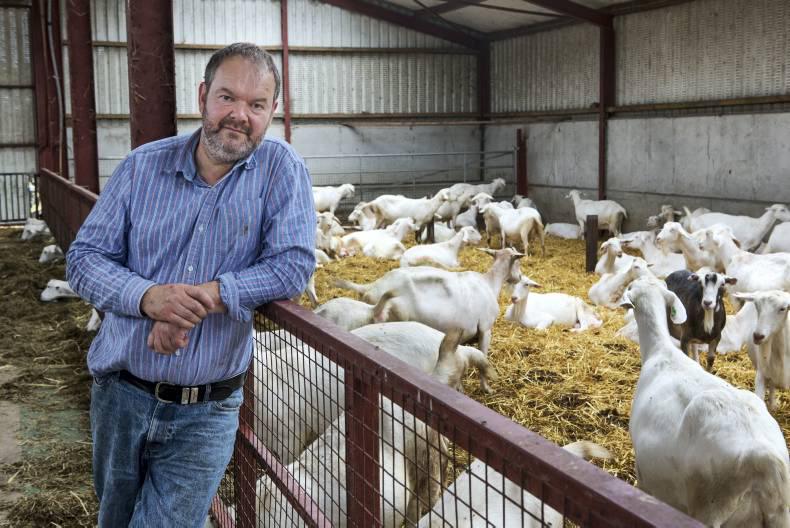I farm: “We’re currently milking just over 100 goats, which milk all-year round. Our main market for the milk is Knockdrinna Farm for cheese-making. We used to pasteurise and bottle our own milk, but the testing requirements were too much for a small-scale operation.”
Milking: “On average, goats produce 1,000 litres of milk a year, with the special ones producing up to five litres a day. Goats are seasonal breeders, so light and time of year determine what they produce. We aim to have a constant supply of milk rather than one big flush at any one time.”
Diet: “The goats are indoors all year round and fed a diet of mostly hay. Silage may sometimes be fed but it has to be top-quality stuff. They also receive a dairy ration.”
Biosecurity: “I hear of people sharing billy goats for breeding; this causes a serious herd health issue. AI for goats is something not many know about, but it’s something I’m looking at strongly. It’s the safest way to add new bloodlines to the herd.”
Kids: “First-time kidders average 1.2 to 1.4 kids, while with second kidders, triplets are more common than singles. Usually, a Boer breed of goat, similar to a Charolais or Belgian Blue in cattle, is bred to the bottom-end goats. This gives a more terminal kid for the niche goatmeat market. I think it will take the likes of a celebrity chef to use goatmeat for it to kick off any time soon.”
Industry: “The biggest challenge Irish models face is competing with imports. I think a total change is in store to have sufficient milk. This means more volume with a lower price rather than the artisan model, where it’s lower volume, higher price.”
Family: “My wife Fionnuala is a primary school teacher in the local school and we have four children – Diarmuid, 24, Fiona, 22, Roisin, 20, and Oisin, 18.”
Quotable quote: “Goats are a minority, but very versatile and will continue to grow steadily. The problem is that the sector is growing from a very small base.”






 This is a subscriber-only article
This is a subscriber-only article






SHARING OPTIONS: